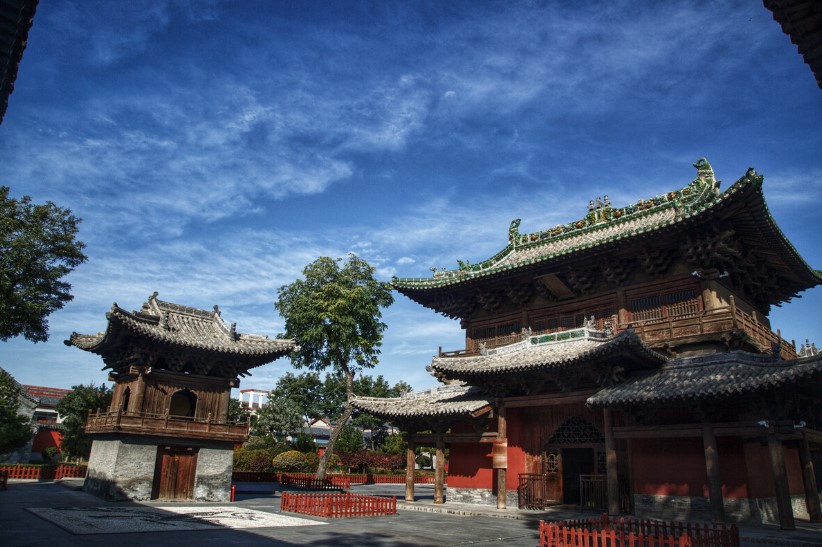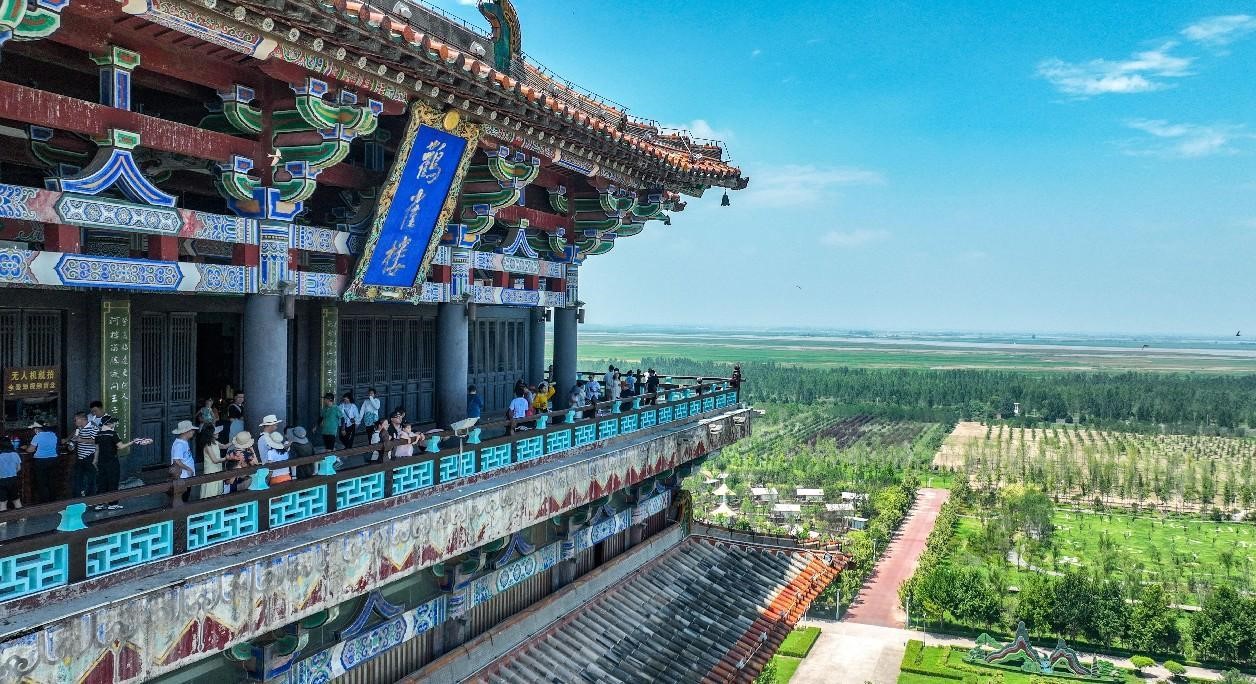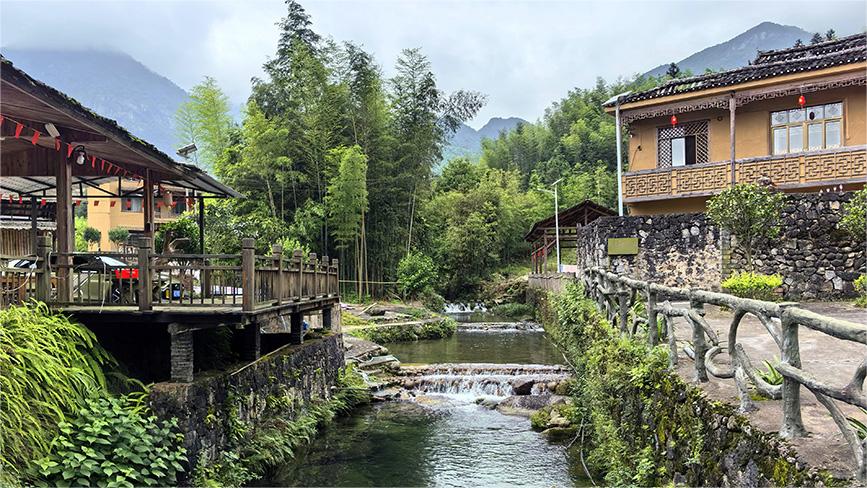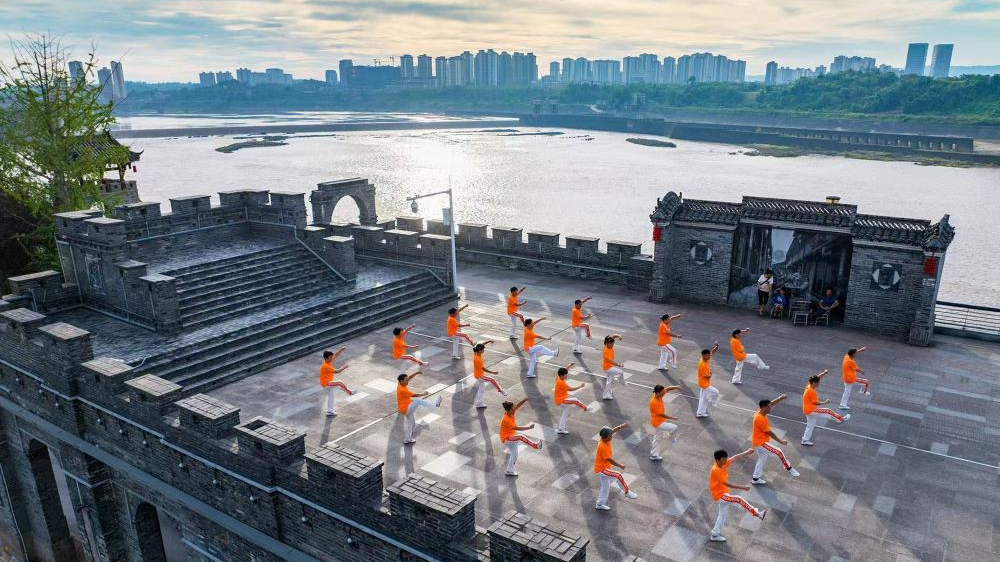Sensational video game 'Black Myth: Wukong' ignites cultural tourism boom in N China's Shanxi
China's Triple-A (high-cost, high-volume, high-quality) single-player game - "Black Myth: Wukong" has become a global hit shortly after it was released worldwide on August 20.
A well-known global online gaming platform saw the number of concurrent players surpass 2.2 million, ranking second globally on the platform. Such success marks Chinese game developers' first foray into a market long dominated by foreign game companies.
Adapting the ancient Chinese classic Journey to the West, the game reimagines the story of Sun Wukong, or Monkey King, one of the most beloved characters in the literature world.
Thanks to this sensational video game, north China's Shanxi province is witnessing a remarkable surge in tourist arrivals.


The photos show a captivating comparison between the Xuankong Temple in Hunyuan county, Datong city, north China's Shanxi province, and a scene created based on it in the video game "Black Myth: Wukong". (Photos from the official WeChat account of the Culture and Tourism Department of Shanxi Province)
As many scenes in the game are created based on cultural and historical sites in Shanxi, relevant topics about the province, including "Shanxi tourism," quickly occupied the list of online trending topics in China.
Seizing the opportunity to promote cultural tourism, the official social media accounts of the Culture and Tourism Department of Shanxi Province have released multiple videos titled "Follow Wukong through Shanxi," garnering wide attention online.
For instance, Yuhuang Temple in Jincheng city, Shanxi, recently received many visitors who came specifically to see the lifelike colored sculptures from the Yuan Dynasty (1271-1368). Many of them were motivated by "Black Myth: Wukong" to explore the real-world locations of iconic scenes in the game. Many of them could not help but exclaim with admiration for the beautiful artworks.
In fact, the synergy between the virtual game world and reality began as early as 2022.
Since the release of the game's first promotional video a few years ago, the Culture and Tourism Department of Shanxi Province has reached an agreement with the developer on leveraging the beautiful scenes in the game to promote cultural tourism in Shanxi.
Currently, Shanxi is not only following trending topics on the game, but also making every effort to receive the huge flow of tourists and win their favor for its cultural tourism industry.
Through innovation in services and business forms, the province is striving to turn the "Wukong effect" into a long-term appeal for visitors.
Players have shown great interest in the scenes featuring the colored sculptures at Yuhuang Temple, each of which has its own unique characteristics: some are majestic, some are gentle and charming, and some are mysterious and unfathomable.
Li Runhang, a primary school art teacher from south China's Guangdong province, was immediately amazed as he stepped into the gate of Yuhuang Temple.


The photos show a captivating comparison between the Chongfu Temple in Shuocheng district, Shuozhou city, north China's Shanxi province, and a scene created based on it in the video game "Black Myth: Wukong". (Photos from the official WeChat account of the Culture and Tourism Department of Shanxi Province)
"It was because of 'Black Myth: Wukong' that I got to know Yuhuang Temple in Jincheng. I specifically come to visit the temple during the summer vacation, and it truly lives up to its reputation! I've gained a fresh understanding of traditional culture here," Li said.
He plans to design a special course to help his students gain a deeper understanding of the profound traditional Chinese culture.
"The open testing and promotion of the game have already started to drive an increase in the tourist flow. During the summer vacation this year, the number of visitors to Yuhuang Temple reached a record high, with over 50,000 visits in six months, and about 40 percent of them learned about the scenic area through the game," said Yin Zhenxing, curator of the Yuhuang Temple museum of colored sculptures and murals.
"The game is inspired by the ancient Chinese tale 'Journey to the West.' With its rich historical and cultural heritage, Shanxi stands out among many regions in China, becoming the most frequently featured province in the game," said Zhang Qing, an official with the Culture and Tourism Department of Shanxi Province.
According to Zhang, the game features 36 filming locations across China, with 27 of them located in Shanxi. Many scenes, including ancient temples, pagodas, archways, grottoes, stone carvings, and sculptures, are either faithfully recreated or meticulously modeled by animators based on real-life ancient buildings in Shanxi, making them vivid and realistic, Zhang said.
"The game-playing process also provides an opportunity to appreciate Shanxi's ancient architectural art and fine traditional Chinese culture," Zhang said.

Tourists visit the Yungang Grottoes in Datong city, north China's Shanxi province. (People's Daily Online/Wang Kexian)
Shanxi is home to 53,875 immovable cultural relics, including 28,027 ancient buildings, and has 531 nationally protected cultural heritage sites in China, Zhang said. Among the ancient buildings in the province, over 500 are ancient wooden buildings built in the Yuan Dynasty and earlier periods, Zhang noted.
The popularity of the game has sparked players' interest in Shanxi's history and culture as well as its ancient architecture. Some netizens have suggested "creating a special tourist route with relevant attractions."
According to Zhang, data from online travel platforms showed a rapid increase in tourism interest in Shanxi on the day the game was launched.
In particular, sites featured in the game, such as Yuhuang Temple, Chongfu Temple, Xiaoxitian Temple, Tiefo Temple, Shuanglin Temple, Sakyamuni Pagoda of Fogong Temple, and Stork Tower, saw a surge in popularity, indicating a strong desire among travelers and netizens to "follow Wukong through Shanxi."
In response to suggestions from netizens, the Culture and Tourism Department of Shanxi Province has formulated a series of measures to boost tourism development.
On August 22, the 2024 Digital Culture and Tourism Brand Innovation Conference was held in Taiyuan, capital of Shanxi. At the opening ceremony of the conference, Shanxi officially kicked off its tourism campaign named "Follow Wukong through Shanxi."
At the same time, the Culture and Tourism Department of Shanxi Province introduced incentive policies to encourage cultural, historical, travel, and gaming vloggers to create content related to Shanxi's ancient architecture featured in the game, providing support and rewards for those who meet relevant requirements.
"In recent years, Shanxi's culture and tourism authorities have been collaborating to leverage new media platforms for promotion and identify the key to drawing tourists, attracting more and more netizens' attention to the beautiful scenery of Shanxi," said a senior official with the Culture and Tourism Department of Shanxi Province.

Tourists visit the Stork Tower, also known as Guanquelou in Chinese, in Yongji city, north China's Shanxi province. (People's Daily Online/Jin Yumin)
Photos
Related Stories
- Behind-the-scenes glimpse of Kong Fu master animating Wukong
- Letter from China: Yaoguai and loong -- Will China's Wukong expand global gaming vocabulary?
- Experience beauty of Chinese culture in 'Black Myth: Wukong'
- 'Black Myth: Wukong' shines spotlight on ancient Shanxi architecture
- Hit game boosts sales of related products
Copyright © 2024 People's Daily Online. All Rights Reserved.









